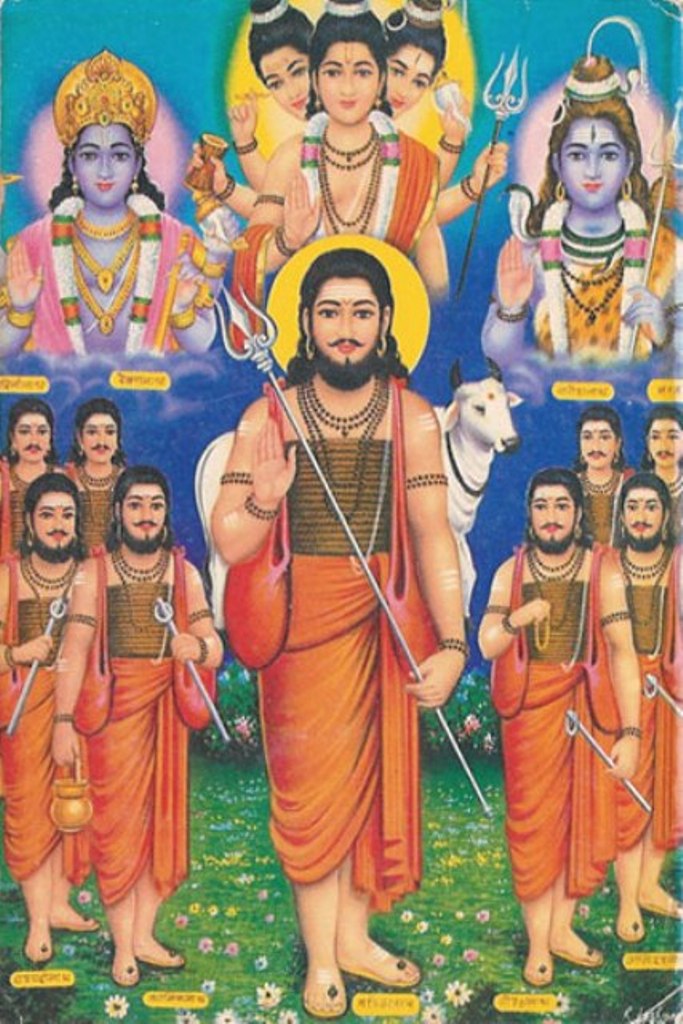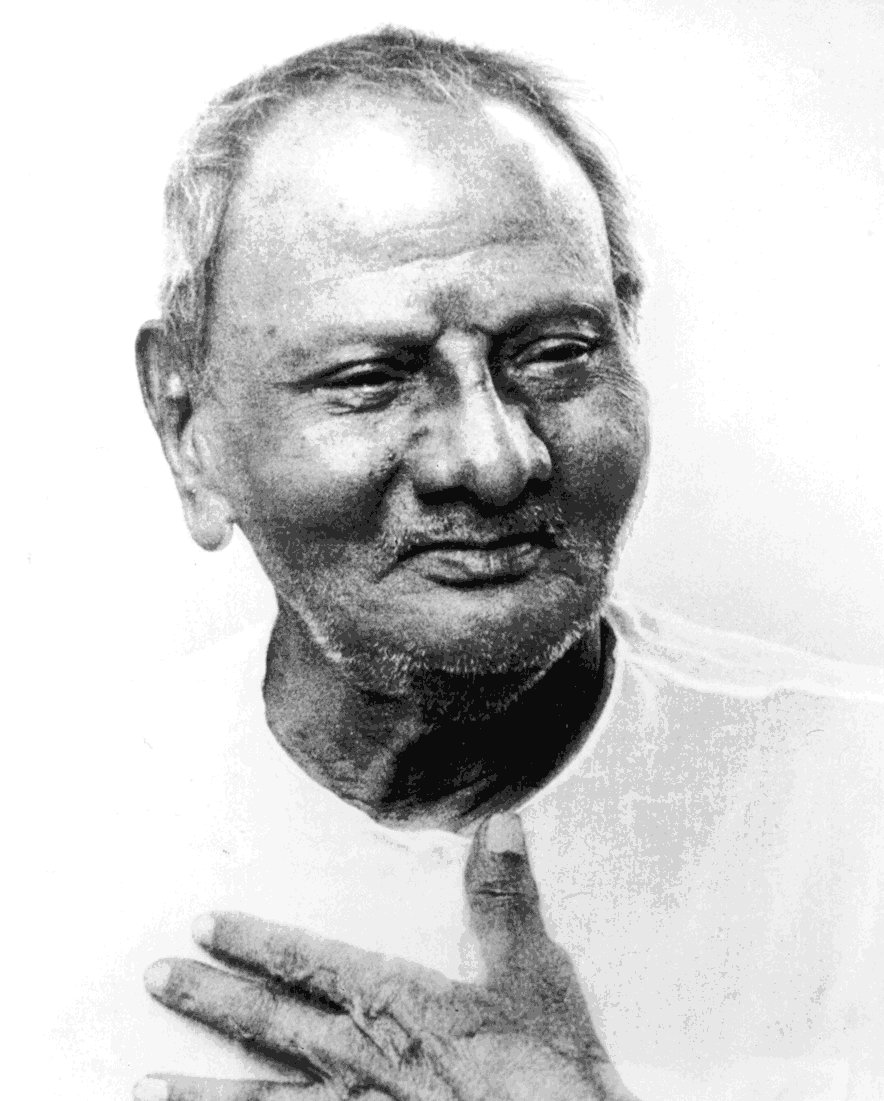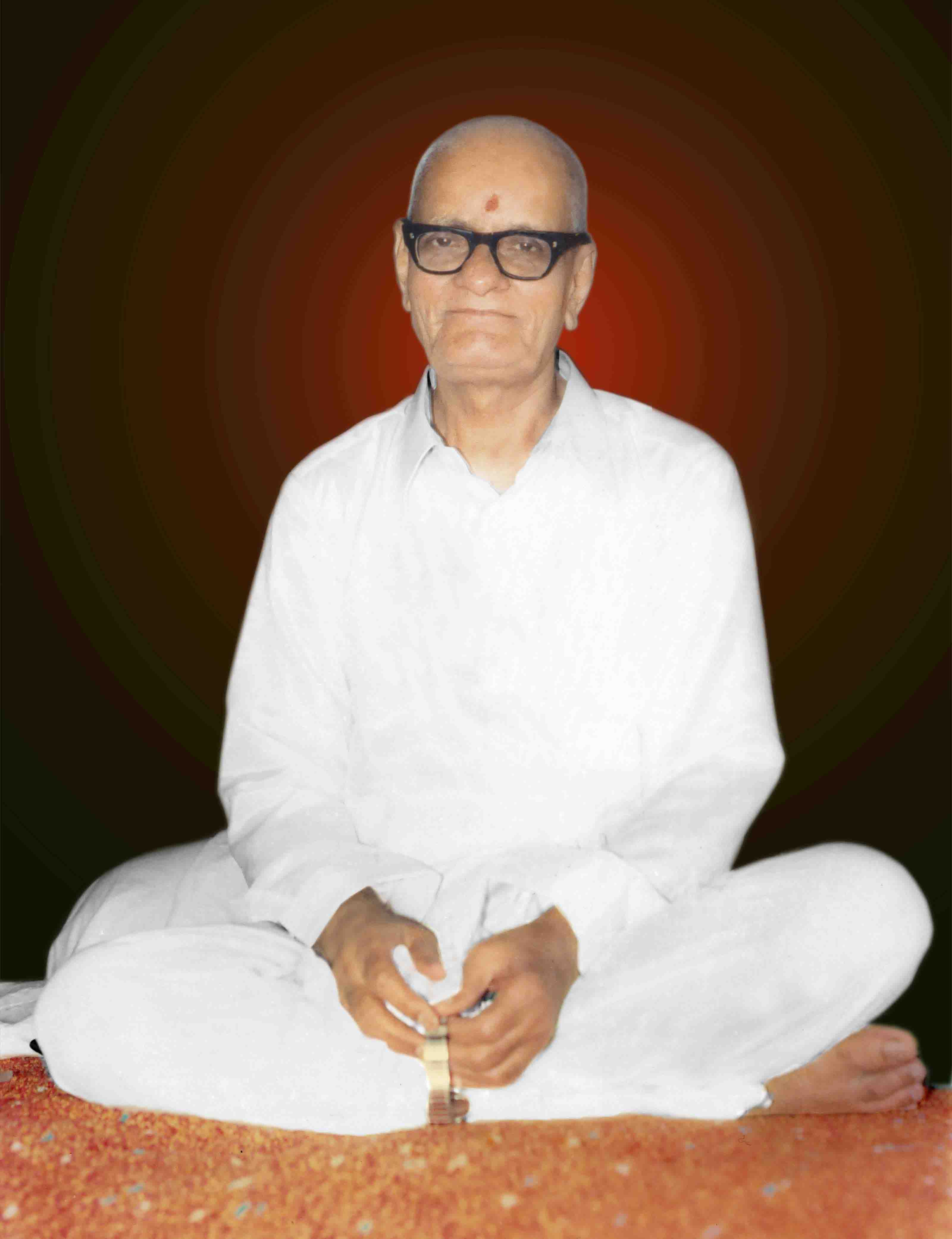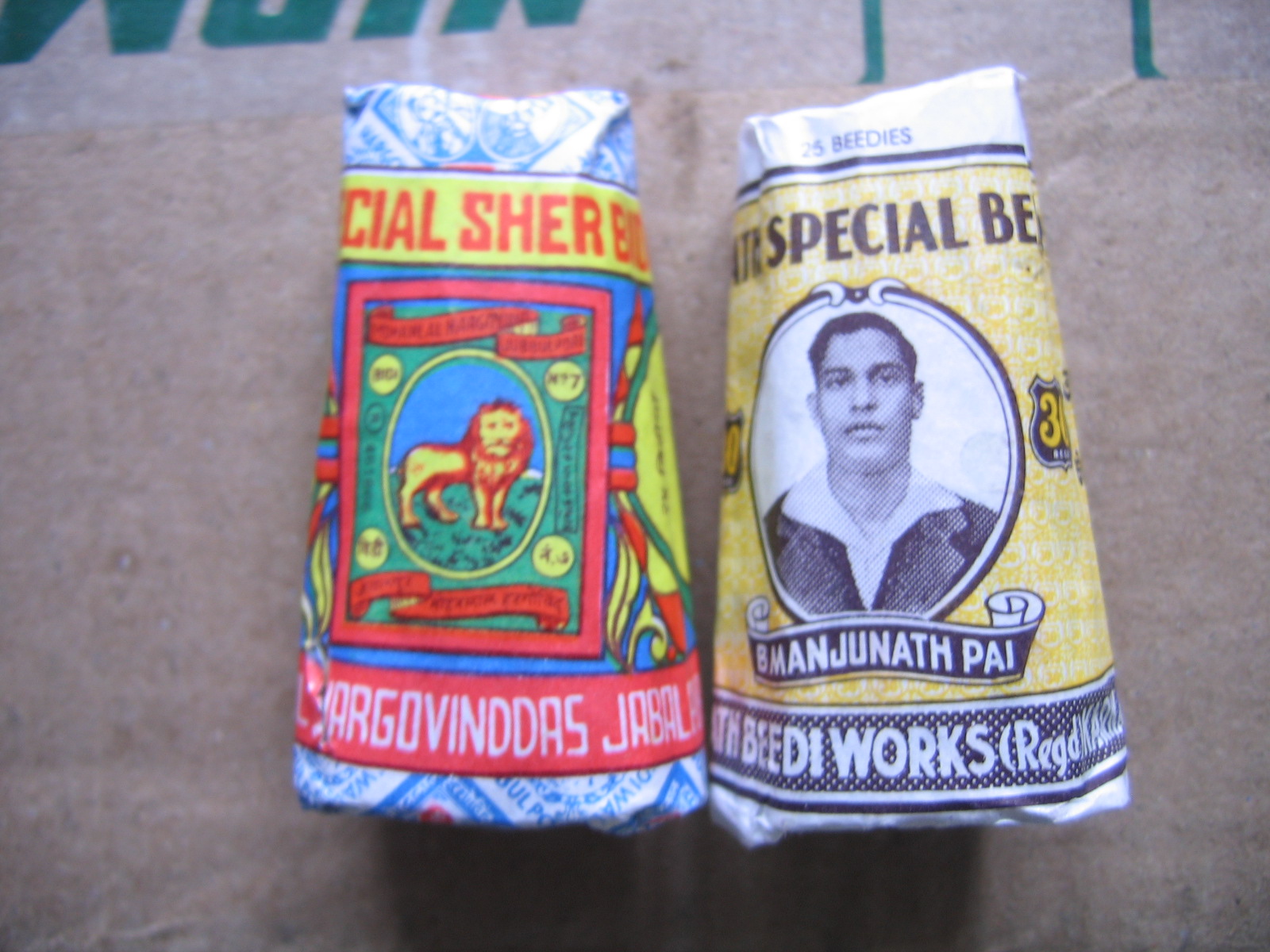|
Nisargadatta Maharaj
Nisargadatta Maharaj (born Maruti Shivrampant Kambli; 17 April 1897 – 8 September 1981) was an Indian guru of nondualism, belonging to the Inchagiri Sampradaya, a lineage of teachers from the Navnath Sampradaya and Lingayat Shaivism. The publication in 1973 of '' I Am That'', an English translation of his talks in Marathi by Maurice Frydman, brought him worldwide recognition and followers, especially from North America and Europe. Biography Early life Nisargadatta was born on 17 April 1897 to Shivrampant Kambli and Parvati bai, in Bombay. The day was also ''Hanuman Jayanti'', the birthday of Hanuman, hence the boy was named 'Maruti', after him. His parents were followers of the Varkari sampradaya, an egalitarian Vaishnavite bhakti tradition which worships Vithoba. His father, Shivrampant, worked as a domestic servant in Mumbai and later became a petty farmer in Kandalgaon. Maruti Shivrampant Kambli was brought up in Kandalgaon, a small village in the Sindhudurga d ... [...More Info...] [...Related Items...] OR: [Wikipedia] [Google] [Baidu] |
Maurice Frydman
Maurice Frydman (''Maurycy Frydman'' or ''Maurycy Frydman-Mor'' in Polish), aka ''Swami Bharatananda'' (20 October 1901 in Warsaw, Russian Empire – 9 March 1976 in Mumbai, Bombay, India), was an engineer and humanitarian who spent the later part of his life in India. He lived at the ashram of Mahatma Gandhi and took an active part in India's fight for independence—notably in helping to draft a new constitution for the State of Aundh that became the Aundh Experiment. He was a Polish Jews, Polish Jew who subsequently Religious conversion, converted to Hinduism. Biography Frydman came to India in the late 1930s as a Jewish refugees, Jewish refugee from Warsaw. A successful capitalist, he was managing director of the Mysore State Government Electrical Factory in Bangalore. Eventually he was won over by Hindu philosophy and became a sannyasi. Frydman was instrumental, along with Gandhi and Bhawanrao Shriniwasrao Pant Pratinidhi, the Raja of Aundh State, Aundh, in helping to draft t ... [...More Info...] [...Related Items...] OR: [Wikipedia] [Google] [Baidu] |
Inchagiri Sampradaya
The Inchagiri Sampradaya, also known as Nimbargi Sampradaya, is a lineage of Hindu Navnath and Lingayat Guru, teachers from Maharashtra which was started by Bhausaheb Maharaj. It is inspired by Sant Mat teachers as Namdev, Ravidas, Raidas and Kabir Das, Kabir. The Inchagiri Sampradaya has become well known throughout the western world due to the popularity of Nisargadatta Maharaj. History Navnath Dattatreya The mythological origins of the Inchagiri Sampradaya are ascribed to Dattatreya, Adiguru Shri Dattatreya. He initiated the Navnath, Navanaths, the Holy Nine Gurus, and the Navnath, Navanath Sampraday. Revananath – Siddhagiri Math (Kaneri Math) One of those Navnaths was Revanath, the 7th or 8th Navnath. Revanath settled on the Siddhgiri hill for ascetic practice, living on whatever the jungle, gave him. He became famous as Kaadhsiddheshwar, "the one who attained supreme realization in a forest". Revananath is considered to have established the Siddhagiri Gramjivan ... [...More Info...] [...Related Items...] OR: [Wikipedia] [Google] [Baidu] |
I Am That
''I Am That'' is a compilation of talks on Shiva Advaita ( Nondualism) philosophy by Sri Nisargadatta Maharaj, a Hindu spiritual teacher who lived in Mumbai. The English translation of the book from the original Marathi recordings was done by Maurice Frydman, edited by Sudhakar S. Dixit and first published in 1973 by Chetana Publications. The book was revised and reedited in July 1981. These publications led to the spread of Nisargadatta's teachings to the West, especially North America and Europe. Excerpts of the book were published in ''Yoga Journal'' in September 1981, the month Nisargadatta died at age 84. The book is considered the author's masterpiece and a spiritual classic by authors and teachers like Eckhart Tolle, Wayne Dyer, Deepak Chopra Peter Crone and Adyashanti, who called the book a "standout" and "the clearest expression I've ever found." Dyer calls Nisargadatta his teacher, and cites the quotation, "Love says: 'I am everything'. Wisdom says: 'I am nothing'. Betw ... [...More Info...] [...Related Items...] OR: [Wikipedia] [Google] [Baidu] |
Siddharameshwar Maharaj
Sri Siddharameshwar Maharaj (1888–1936) was a guru in the Inchagiri Sampradaya founded by his guru Bhausaheb Maharaj, a branch of the Navnath Sampradaya, the 'Nine Masters' tradition in India. His disciples included Nath teachers Nisargadatta Maharaj, Ranjit Maharaj, Kaadsiddheshwar, and Ganapatrao Maharaj Kannur. Biography Siddharameshwar was born in 1888 in the village Pathri, Solapur, India. Since his childhood, he was very intelligent and had very sharp imbibe abilities. In 1906, he was initiated by his guru 'Shri Bhausaheb Maharaj' in Inchagiri in Karnataka India, who taught mantra meditation as the way to reach Final Reality. He was one of the contemporaries of Sri Ramana Maharshi. In 1920, Siddharameshwar started to set out on "the Bird's Path", the fast way to attain realization, six years after Bhauhaseb maharaj had died. His fellow-students opposed, but eventually he succeeded by himself. Siddharameshwar died on 9 November 1936 (Ekadashi, 11th day in the later h ... [...More Info...] [...Related Items...] OR: [Wikipedia] [Google] [Baidu] |
Inchegeri Sampradaya
The Inchagiri Sampradaya, also known as Nimbargi Sampradaya, is a lineage of Hindu Navnath and Lingayat teachers from Maharashtra which was started by Bhausaheb Maharaj. It is inspired by Sant Mat teachers as Namdev, Raidas and Kabir. The Inchagiri Sampradaya has become well known throughout the western world due to the popularity of Nisargadatta Maharaj. History Navnath Dattatreya The mythological origins of the Inchagiri Sampradaya are ascribed to Adiguru Shri Dattatreya. He initiated the Navanaths, the Holy Nine Gurus, and the Navanath Sampraday. Revananath – Siddhagiri Math (Kaneri Math) One of those Navnaths was Revanath, the 7th or 8th Navnath. Revanath settled on the Siddhgiri hill for ascetic practice, living on whatever the jungle, gave him. He became famous as Kaadhsiddheshwar, "the one who attained supreme realization in a forest". Revananath is considered to have established the Kaadsiddheshwar temple and math, also called ''Kaadsiddheshwar Peeth ... [...More Info...] [...Related Items...] OR: [Wikipedia] [Google] [Baidu] |
Varkari
Warkari (Marathi: वारकरी; Pronunciation: �aːɾkəɾiː Meaning: 'The one who performs the ''Wari''') is a sampradaya (religious movement) within the bhakti spiritual tradition of Hinduism, geographically associated with the Indian state of Maharashtra. Warkaris worship Vitthal (also known as Vithoba), the presiding deity of Pandharpur, regarded as a form of Krishna. Saints and gurus of the bhakti movement associated with the Warkaris include Dnyaneshwar, Namdev, Chokhamela, Eknath, and Tukaram, Gadge Maharaj all of whom are accorded the title of Sant. Recent research has suggested that the Varkaris were historically the followers of VITHHAL & RAKHUMAI(विठ्ठल आणि रखुमाई). Influence The Warkari tradition has been part of Hindu culture in Maharashtra since the thirteenth-century CE, when it formed as a ''panth'' (community of people with shared spiritual beliefs and practices) during the Bhakti movement. Warkaris recognise around ... [...More Info...] [...Related Items...] OR: [Wikipedia] [Google] [Baidu] |
Vaishnavism
Vaishnavism ( sa, वैष्णवसम्प्रदायः, Vaiṣṇavasampradāyaḥ) is one of the major Hindu denominations along with Shaivism, Shaktism, and Smartism. It is also called Vishnuism since it considers Vishnu as the sole Para Brahman, supreme being leading all other Hindu deities, i.e. ''Mahavishnu''. Its followers are called Vaishnavites or ''Vaishnava''s (), and it includes sub-sects like Krishnaism and Ramaism, which consider Krishna and Rama as the supreme beings respectively. According to a 2010 estimate by Johnson and Grim, Vaishnavism is the largest Hindu sect, constituting about 641 million or 67.6% of Hindus. The ancient emergence of Vaishnavism is unclear, and broadly hypothesized as a History of Hinduism, fusion of various regional non-Vedic religions with Vishnu. A merger of several popular non-Vedic theistic traditions, particularly the Bhagavata cults of Vāsudeva, Vāsudeva-krishna and ''Gopala-Krishna, Gopala-Krishna'', and Narayana, ... [...More Info...] [...Related Items...] OR: [Wikipedia] [Google] [Baidu] |
Vithoba
Vithoba, also known as Vi(t)thal(a) and Panduranga, is a Hindu deity predominantly worshipped in the Indian state of Maharashtra and Karnataka. He is generally considered as a manifestation of the god Vishnu, or his avatar Krishna. Vithoba is often depicted as a dark young boy, standing arms akimbo on a brick, sometimes accompanied by his consort Rakhumai. Vithoba is the focus of an essentially monotheistic, non-ritualistic bhakti-driven Varkari faith of Maharashtra and the Haridasa faith of Karnataka. Vithoba Temple, Pandharpur is his main temple. Vithoba legends revolve around his devotee Pundalik who is credited for bringing the deity to Pandharpur, and around Vithoba's role as a saviour to the poet-saints of the Varkari faith. The Varkari poet-saints are known for their unique genre of devotional lyric, the abhang, dedicated to Vithoba and composed in Marathi. Other devotional literature dedicated to Vithoba includes the Kannada hymns of the Haridasa and the Marathi versio ... [...More Info...] [...Related Items...] OR: [Wikipedia] [Google] [Baidu] |
Sindhudurg District
Sindhudurg district (Marathi pronunciation: in̪d̪ʱud̪uɾɡ is an administrative district of the Konkan division in India, which was carved out of the erstwhile Ratnagiri district. The district headquarters are located at Oros and the district occupies an area of approximately 5,207 km and has a population of 849,651, of which 12.59% were urban (as of 2011). As of 2011, it's the least populous district of Maharashtra (out of 36). History The word 'Konkan' is of Indian origin and considerable antiquity, though the origin of the name has never been definitively explained. The seven kingdoms of the Konkan of mythology are mentioned in the History of Kashmir and are said to have included nearly the whole west coast of India. The Pandavas are said to have passed through this region in the 13th year of their exile and to have settled in this area for some time. The Raja of this region, Veerat Ray, accompanied them in the war at Kurukshetra with the Kauravas. In the seco ... [...More Info...] [...Related Items...] OR: [Wikipedia] [Google] [Baidu] |
Beedi
A beedi (also spelled bidi or biri) is a thin cigarette or mini-cigar filled with tobacco flake and commonly wrapped in a tendu (''Diospyros melanoxylon'') or ''Piliostigma racemosum'' leaf tied with a string or adhesive at one end. It originates from the Indian subcontinent. The name is derived from the Marwari word ''beeda''—a mixture of betel nuts, herbs, and spices wrapped in a leaf. It is a traditional method of tobacco use throughout South Asia and parts of the Middle East, where beedies are popular and inexpensive. In India, beedi consumption outpaces conventional cigarettes accounting for 48% of all Indian tobacco consumption in 2008. History Beedies were invented after Indian tobacco cultivation began in the late 17th century. Tobacco workers were the first to create them by taking leftover tobacco and rolling it in leaves. The commercial Indian beedi industry saw rapid growth during the 1930s probably driven by an expansion of tobacco cultivation at the time b ... [...More Info...] [...Related Items...] OR: [Wikipedia] [Google] [Baidu] |
Maharashtra
Maharashtra (; , abbr. MH or Maha) is a states and union territories of India, state in the western India, western peninsular region of India occupying a substantial portion of the Deccan Plateau. Maharashtra is the List of states and union territories of India by population, second-most populous state in India and the second-most populous country subdivision globally. It was formed on 1 May 1960 by splitting the bilingual Bombay State, which had existed since 1956, into majority Marathi language, Marathi-speaking Maharashtra and Gujarati language, Gujarati-speaking Gujarat. Maharashtra is home to the Marathi people, the predominant ethno-linguistic group, who speak the Marathi language, Marathi language, the official language of the state. The state is divided into 6 Divisions of Maharashtra, divisions and 36 List of districts of Maharashtra, districts, with the state capital being Mumbai, the List of million-plus urban agglomerations in India, most populous urban area in India ... [...More Info...] [...Related Items...] OR: [Wikipedia] [Google] [Baidu] |
Samarth Ramdas
Samarth Ramdas (c. 1608 - c. 1681), also known as Sant Ramdas or Ramdas Swami, was an Indian Hindu saint, philosopher, poet, writer and spiritual master. He was a devotee of the Hindu deities Rama and Hanuman. Early life Ramdas or previously Narayan was born at Jamb, a village in present-day Jalna district, Maharashtra on the occasion of Rama Navami, probably in 1608. He was born into a Marathi Deshastha Rigvedi Brahmin family to Suryajipanta and Ranubai Thosar. His father was a devotee of Surya, the Vedic solar deity. Ramdas had an elder brother named Gangadhar. His father died when Narayan was around seven years of age. Narayan turned into an introvert after the demise of his father and was often noticed to be engrossed in thoughts about the divine. According to legend, Narayan fled his wedding ceremony upon hearing a pundit chant the word 'Saavdhan' (Beware!) during a customary Hindu wedding ritual. Then at the age of twelve, he is believed to have walked to Panchavati, a H ... [...More Info...] [...Related Items...] OR: [Wikipedia] [Google] [Baidu] |




.jpg)


